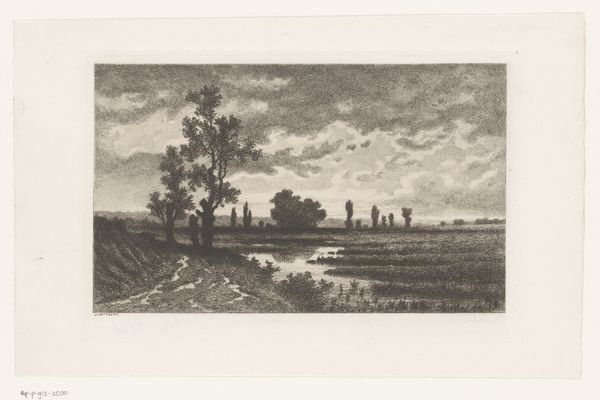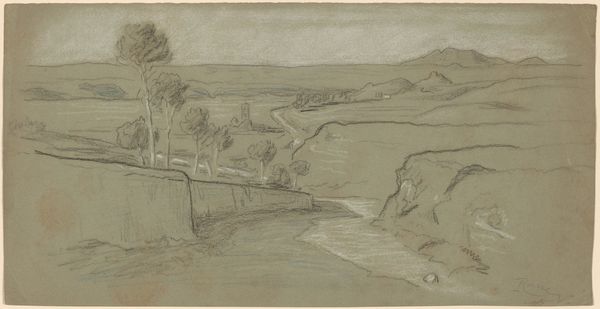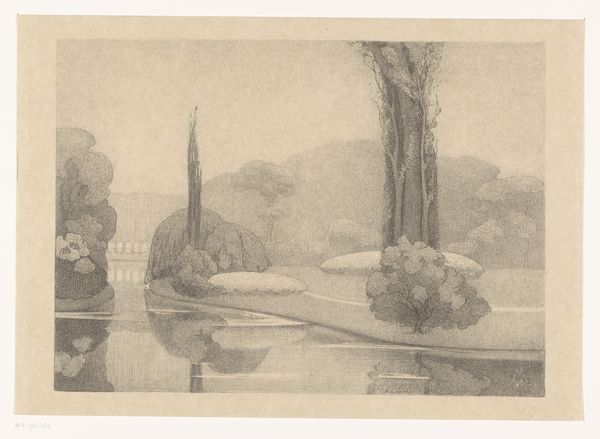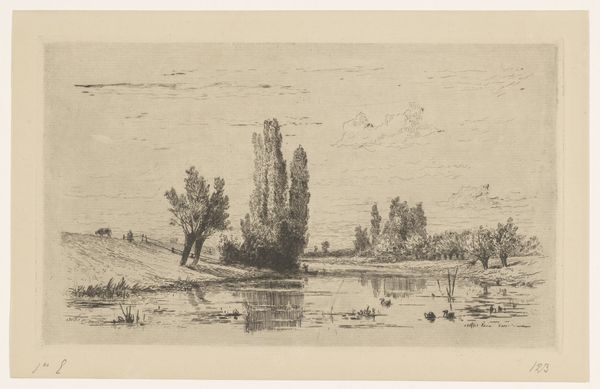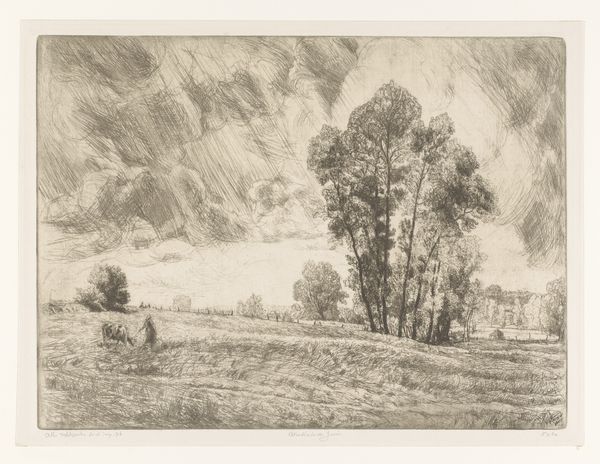
drawing, watercolor
#
drawing
#
landscape
#
charcoal drawing
#
watercolor
#
pencil drawing
#
watercolour illustration
Dimensions: height 270 mm, width 419 mm
Copyright: Rijks Museum: Open Domain
Curator: Before us is Maurits van der Valk's "Landschap met koeien in een weiland," created sometime between 1867 and 1918. It's a study in watercolor and drawing media. Editor: My immediate reaction is to the subdued tonal range, all muted greys and browns, suggesting a certain stillness. It speaks to a very specific pastoral, but perhaps tinged with melancholy? Curator: Well, let’s think about what underpinned landscapes from that era. Van der Valk likely would have accessed pre-prepared watercolor blocks or drawing pencils sourced from industrial manufacturing centers. The shift from handmade materials to factory production greatly expanded artists' access. Editor: And thinking about who owned the land itself...were the figures depicted owners or laborers? This work makes me wonder about land ownership, and rural social hierarchies. Was the landscape painting also complicit in glorifying the landowning classes and erasing rural realities of the poor? Curator: Indeed. Landscape as genre has always reflected socio-economic positions. This work however, done in accessible drawing medium, questions traditional art boundaries, making one rethink artistic labor's relationship to its subject matter. What this allowed him to record was how agrarian industry changed landscape itself. Editor: I'm particularly interested in the choice to portray labor here in what appears to be this quiet interaction with nature, the cattle tending. Where might these sit in discourse around late nineteenth-century views on modernity in landscape art? Is he using those pictorial tropes or responding to them in order to highlight different perspectives on agrarian reality? Curator: The tonal quality and medium choice, likely employing paper produced at a much cheaper cost than canvas and paint, indicate both his engagement with tradition but using cheaper media indicates artmaking's industrial transformations. By focusing on the means of creation we begin to appreciate his response and vision in full. Editor: Looking at it, I agree. Analyzing Van der Valk's landscape, it gives voice to both material concerns around art production while asking poignant questions related to representation in society itself. Curator: A landscape painting reveals how art both reflects its societal moment and responds actively in material choices. Editor: Precisely! An era shaped by social tensions beautifully caught here.
Comments
No comments
Be the first to comment and join the conversation on the ultimate creative platform.


